Chocolate Chinchillas
A Dark Tan rarely happens with a first generation
Ebony x Beige cross. They are often the result of several generations
of ebony breeding. A true chocolate looks like its name. So far as I have seen there are two ways tans approach adult color, one type fades (lighter or darker) and the other type gets spots.
2023 - Chocolate boy, two years old at his full darkness of color.
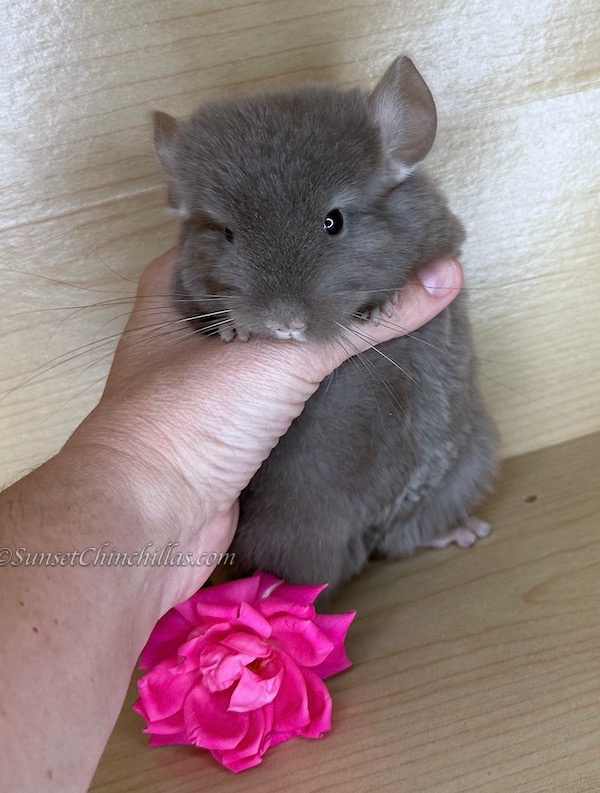
2023 - Chocolate baby girl, 5 weeks old. Will continue to get darker with age.
2023 - Chocolate boy, 3 months old, his chocolate mustache is adorable. As he ages the rest of his body will darken to that color.
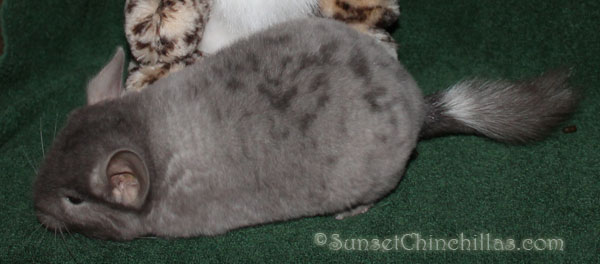
2015 - Baby Chocolate girl starting to get spots of her adult color.
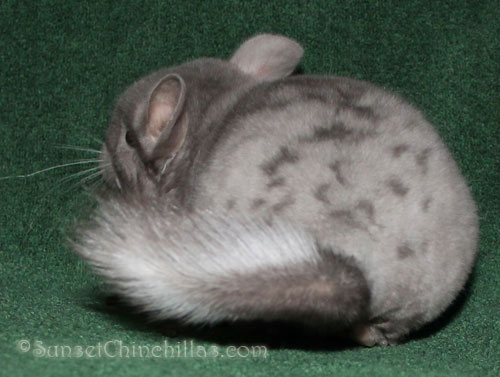
2015 - Picture of the baby girl's rump. She will eventually turn as dark as the female below.
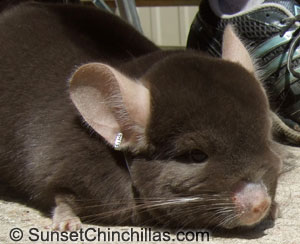
This lovely lady is as dark as I see them come, she was bred by Ronda Frazier in 2008. Unfortunately she has ringworm in this photo, but she is a lovely chocolate color.
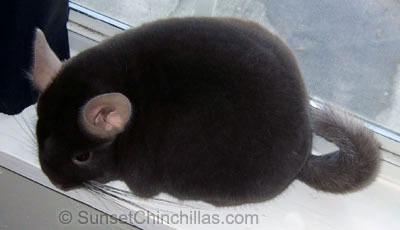
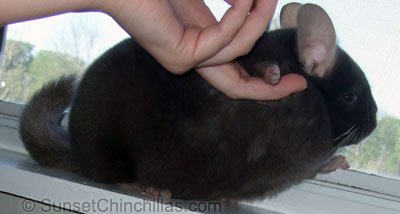
2012 - Pictures of a lovely young chocolate's back and belly.

2016 - One of my Chocolate males looking good at 6 years old. A good line should stay blue and unoxidized for as long as possible.
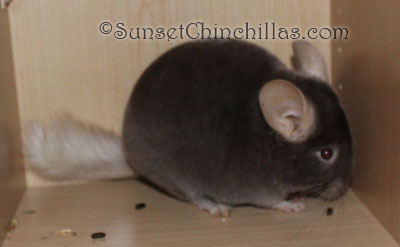
2014 - Young chocolate male.
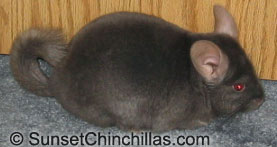

This guy from 2002 is very dark on top but still has some gradient to a lighter shade on the sides. He would be considered a dark tan,
You see he has continued to darken and oxidize (become reddish) as he ages. These pictures were taken
at 6 months (left) and 8 months (right) of age.
Breeding and showing these dark tans is difficult. If you have really good clarity and blue color in your herd you will not do well with dark tans, they tend to turn out a slate blue color.
The chocolaty color desired by judges and people requires some red.
The genetics of tan chinchillas is very interesting. For show it is accepted that there is one type of hetero beige and they all show in the same class. In reality there
are many different strains of beige. I am currently working with two types of dominant hetero beige. One has a solid brown fur shaft and one has a white fur shaft.
They both look the same on the outside but if you blow into the fur you would see white on the chocolate girl at the top of this page.
If you blew into the fur on the guy at the bottom, it would be the same color as the tip. One of the biggest differences in the two strains is that the white underfurred chocolates are born almost white with a black tail.
The dark underfurred chinchillas are born dark.
As far as quality, the girl at the top beats the 2002 boy. Chins that oxodize and turn orange early are not good to show.
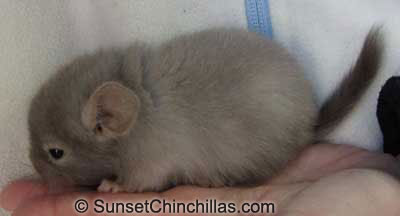
Three day old extra dark tan chinchilla of the white underfur variety. At this age I can tell she will be very dark, but don't know if she will become a true chocolate.
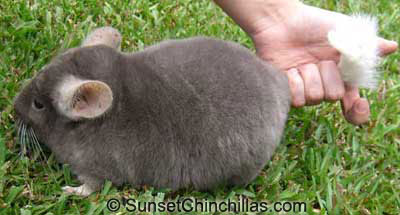
Same female at six months old. You can see she has gotten very dark and her tail has turned white. She is still not as dark as a true chocolate would be.
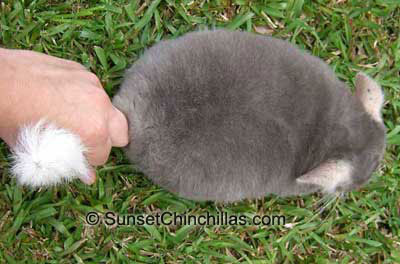
This picture of her back shows that she is getting in spots of darker fur. She will continue to darken for another 6-8 months.
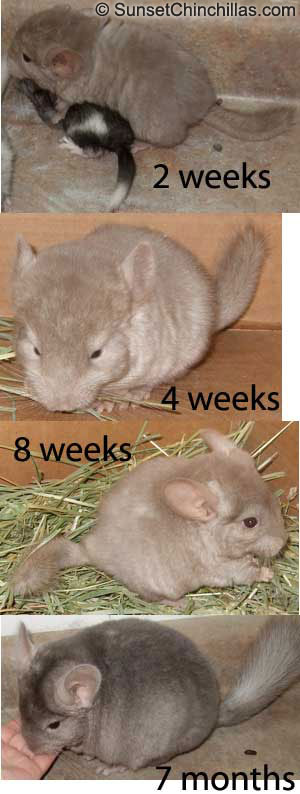
This shows the progression of a baby born with the darker underfur. They are born a color and either lighten or stay that color. In the 7 month old photo the chinchilla may look like it has gotten darker because the veiling has come in. All chinchillas will darken across the back as they age if they have a dark veil. Obviously light standards don't as they are lacking the veiling. Any tan bred into a light standard line would stay very pale across the top.